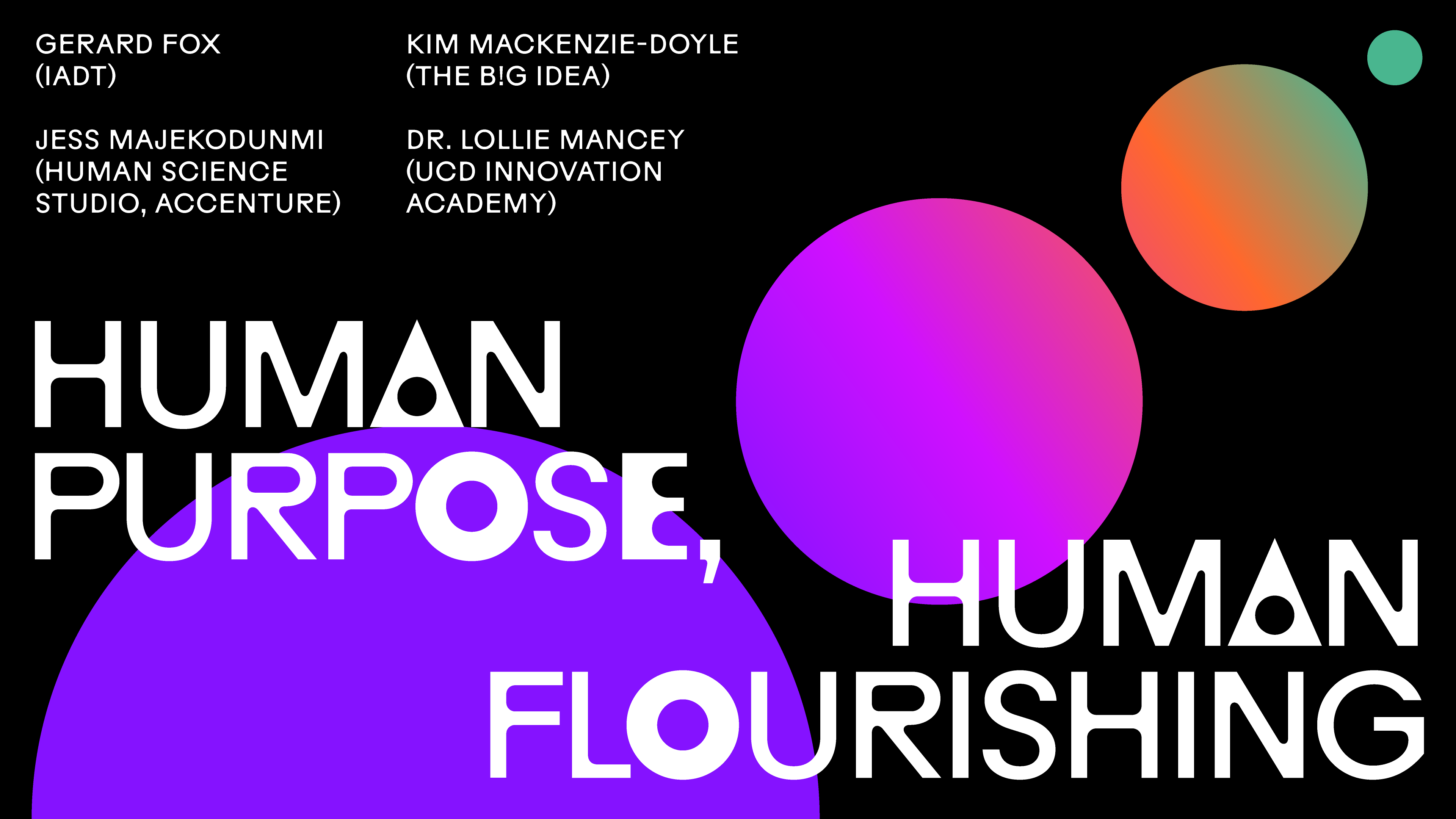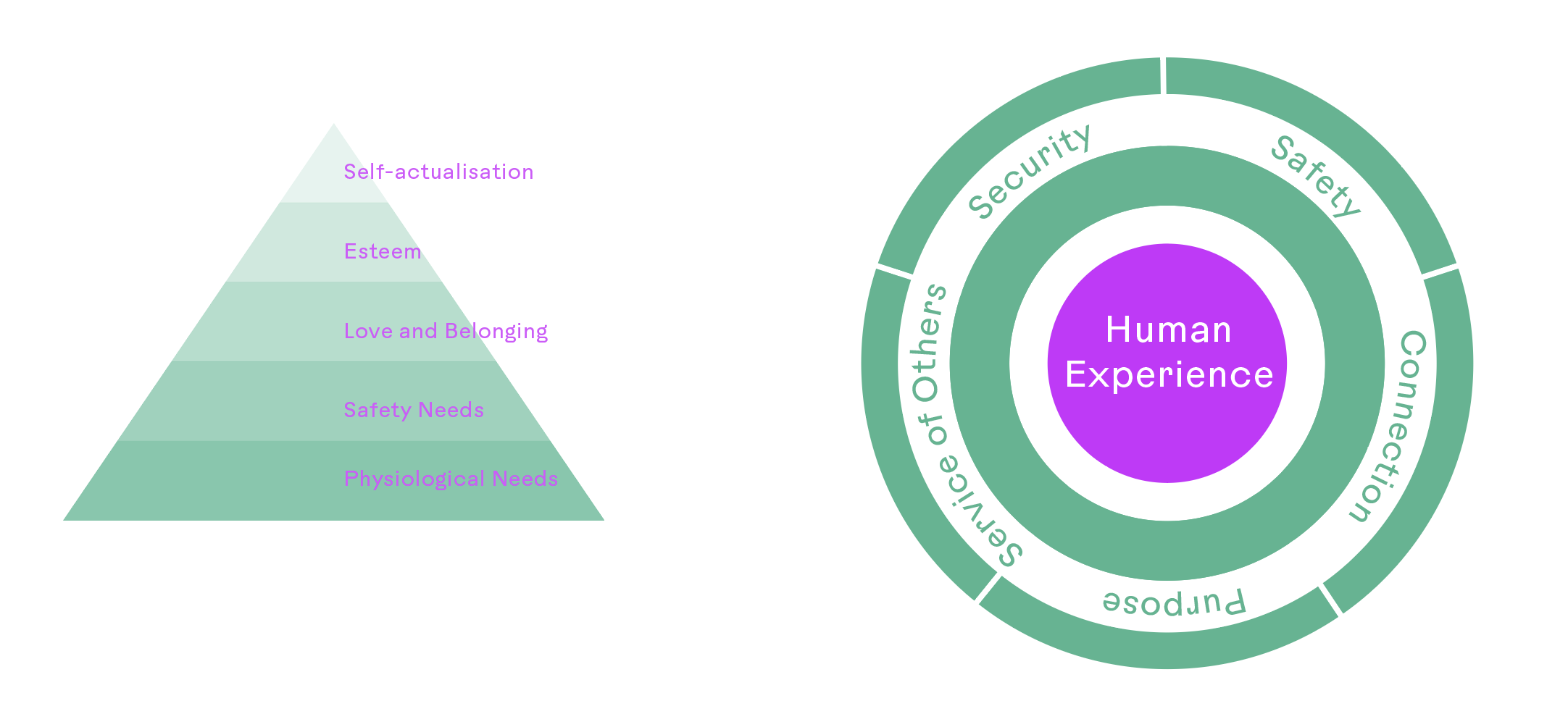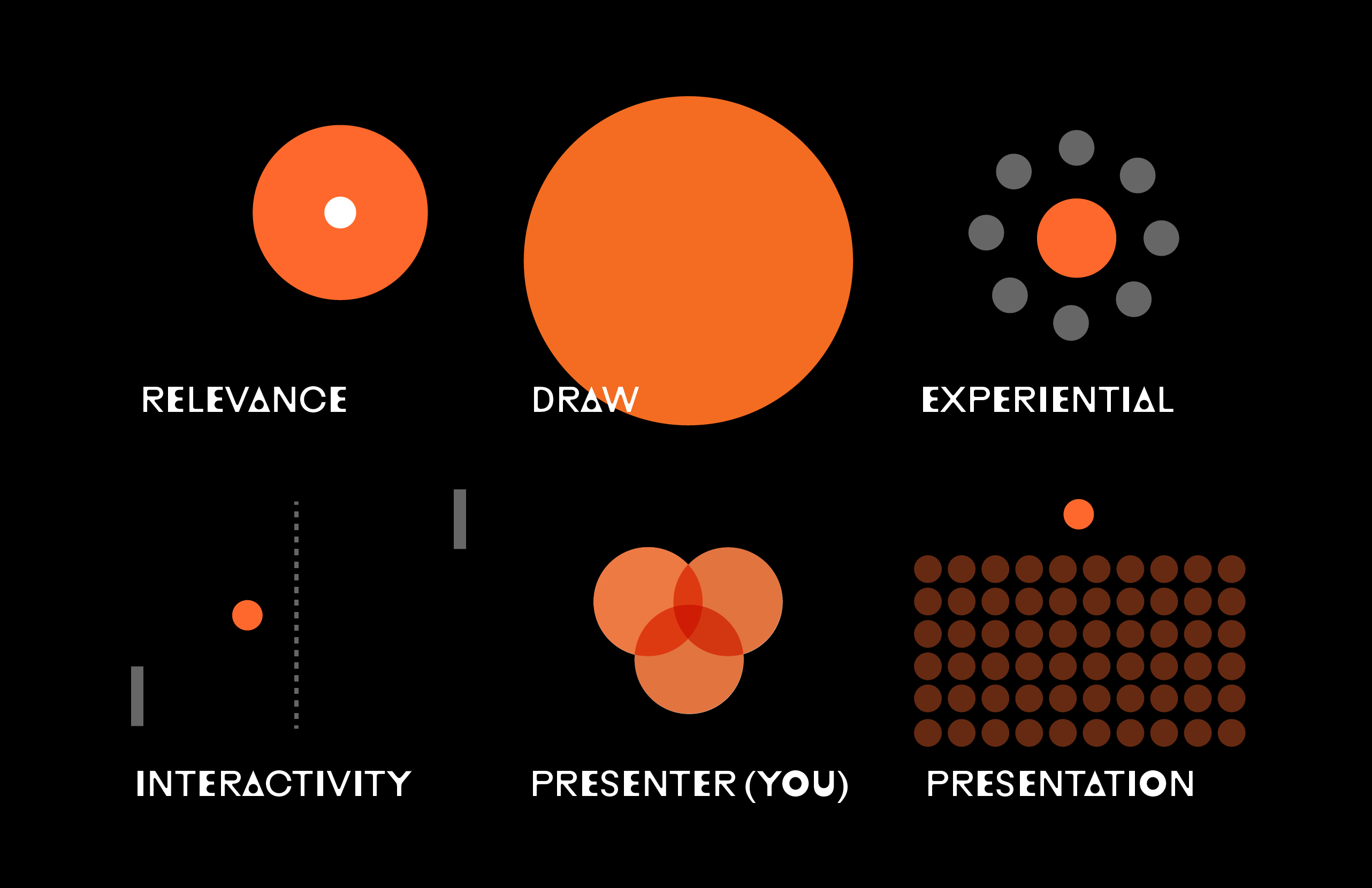
Human Purpose, Human Flourishing
Human Purpose, Human Flourishing.
(a panel discussion from BOUNCE live at Trinity College Dublin, January 2025)
_____
A question.
Have you ever truly considered the power of a really, really good question?
The average 4 year old girl has. She understands the power of a great question instinctively. So she asks, as a daily average, 390 questions. Every single day.
Why is the sky blue? What about when it’s not blue, is it still blue? What about when it’s grey, or pink, or orange? Is it still blue when it's night? Etc.
Asking questions is the little girl’s vehicle for understanding purpose in the world. But typically, this is the age her questioning peaks. Around then she’ll go to school, where questions become definitive answers and the default mode is to dampen down her natural curiosity. Over time, she’ll learn not to ask so many questions. She might become self-conscious, afraid of looking silly in front of her teachers and peers. She quietens down, not wanting to expose her perceived lack of knowledge.
We’ll come back to this, but what she doesn’t yet know is that no one has all the answers. That one of the greatest follies of our time is believing anyone has all the answers. That ceasing to ask questions is actually a barrier to development - not just for her, but for society as a whole.
This all brings us neatly to the Human Purpose, Human Flourishing discussion held earlier this year at Bounce 2025. In a panel moderated by Accenture Human Science Studio’s Jess Majekodunmi, panellists Kim Mackenzie Doyle (The B!G Idea) Dr Lollie Mancey (UCD Innovation Academy), and Gerard Fox (IADT) explored the role of design in society, asking questions around what we as designers can do to make a greater impact using our skills and our perspectives. The discussion was broad in scope, considering what design work means now and in the future, the role of education, how learning can be improved and what it really will take for us all - not just designers but society as a whole - to flourish.
Across the lively discussion, some key themes emerged:
On Purpose: Why Maslow’s Hierarchy Needs A Redo
Another question.
How often do you question whether your work is truly serving a human purpose?
The first step in human flourishing is asking how things can be better. The little girl asks ‘how’, and as designers, our role is to ask ‘what if’. Designers understand purpose as a crucial component of human flourishing. For many of us, creativity is a calling, and design is how our vocation comes to life. We are privileged to have the means to express our creativity in ways that can benefit humanity, nature and the world. So. What are we going to do with it?
To go forward, let’s go back. In 1943, American psychologist Abraham Maslow created his Hierarchy of Needs describing human motivation. Postwar, progress moved steadily upwards, establishing survival, security and belonging as building blocks, moving on up to self-esteem and self-actualisation.
For Maslow in the 1940s, purpose was the same as creativity, moral development and emotion, all sitting at the top of the hierarchy. Hold that thought a hot minute, because when we look through the lens of today and tomorrow, a hierarchical structure isn’t quite fit for the purpose of, well… fulfilling our purpose.
What if we were to reimagine the hierarchy as a circle? A system of interdependent elements, working together to connect safety, security, connection, purpose and the service of others as central to the human experience?

Consider the case of Dr Lollie Mancey. During the discussion, she described finding our purpose as a lifelong pursuit. All of us have something more to offer, but very often, we don’t know where to begin. In her own story, having worked for years as a waitress and with a new baby in tow, in her late 30s she began to ask ‘what if there was a life for me beyond noodles?’ Answering this question led her to a PhD in Organisational Learning and her current work as Anthropologist, Futurist, Innovator and AI Ethicist. This is her ikigai, the Japanese concept described by moderator Jess Majekodunmi, that combines what you love, what the world needs, what you can be paid for and what you are good at to help you discover your true purpose.
The B!g Idea’s Kim MacKenzie-Doyle illuminated your awakening on the realisation that your incredible skills that you lend to companies to make money can also be used to solve problems and democratise design thinking. Understanding this is how she found her own ikigai, which is making creative thinking accessible to the wider public who don’t have the educational backgrounds we do, particularly young people who are trying to solve problems we have created for them.
Jess Majekodunmi (Human Science Studio, Accenture) chairs our panel @ BOUNCE 2025
Gerard Fox from IADT described what he has seen - designers coming out of college, armed with strong morals and ethical values with strong ambitions to make positive change. Once they’re in the workforce, they’re quick to get demoralised, with the realities of working in the commercial sector coming up in direct contrast to their way they want to see and be in the world. Kim cited the realities of the working world also. In response to an audience question on learning how to say no when work goes against morals, saying sometimes you need experience and to be ‘older, bolder and braver’ in order to develop your inner voice and express your true feelings. A reality check, but reality nonetheless. It’s understanding that in design as in life, everything - including experience - is a process which must be worked through.
Maslow’s model was built for a different era. And while the fundamentals still apply, we’re fortunate to live at a time where most of us in the industry have the ability to fulfil every step he outlined. We now have the power to create a model that centres purpose as a key driver alongside other fundamentals. As Jess wrapped up the panel by saying, it’s up to you to find your own inspiration - in the everyday and the extraordinary.
Which all leads us to some key questions…
What is our own ikigai? How can we reinvent the pyramid so it becomes a wheel that places all needs as equal? What can we do to ensure our work has purpose beyond profit? How much should we care about what we’re lending our talents and skills to in exchange for a paycheck? And how can we tune in to our purpose more and create work for positive change?
School’s Out: Learning Is Flourishing
The dreams and ambitions you have as a child for what you want to be when you grow up are often left in the dust of the schoolground. Is that just what happens when you do grow up… or is there something more to consider here?
Across the panel, there was broad agreement on the following topic. Which to be frank, is a little alarming.
Education is not fit for purpose in this country. And the exact human qualities design depends on - curiosity, experimentation, dialogue - are being stifled and taught that they’re wrong.
Dr. Lollie Mancey speaking at BOUNCE 2025
Dr. Lollie described how the current system teaches children to stop asking questions, quelling curiosity in lieu of becoming receptacles in service of the curriculum. Box ticking and report filling over enlightenment. Ger spoke of similar struggles, citing the Ken Robinson TED talk and the issue that dialogue isn’t necessarily encouraged in the culture of learning by rote.
It’s not ideal. What can we do? Turns out, a lot. Designers are trained to spot the opportunity in problems and this is no different. What is different is the proposed solution.
Ger spoke with emphatic impact on the need for the design community to turn away from our tendency to navel-gaze and instead build platforms, and reach out across the divide to forge connections with people outside our industry. Instead of being exasperated when people who don’t work in creative jobs don’t understand why we do what we do, we need to be more open and patient. He underlined our urgent need to figure out our own way of communicating, defining and articulating what we do to those in education, industry, policy makers and beyond. We need to make it crystal clear how we think we can help with the gargantuan task of shaping and creating the future. Kim backed this up, speaking eloquently on getting out of our design bubble to make change through mass collaboration through mechanisms that allow for that - cross generational, cross sectoral, with different types of people - ourselves included. Dr Lollie urged us to work on our own point of view and state it, even on LinkedIn (yes you can, stop cringing and post). To break out of our community, to stop being so insular and actively seek people out that you don’t agree with so you can have your say and make your case in places that aren’t echo chambers.
Gerard Fox speaking @ BOUNCE 2025
Because the thing is, we can help. We have so much to give. Not just to the government, commercial entities, or even the greater good. It’s also for us. We have to stop being so conflict avoidant, because our silos are stopping society - and ourselves - from flourishing.
We have transversal skills, like critical thinking, problem solving and curiosity, that are so much in demand from employers across every industry and governmental institutions. What we do is so far beyond creating images or making advertising look nice. So here are some questions to ask ourselves.
What if we showed up at the decision-making table and deployed our skills at the highest level? What if we stopped grumbling at our desks and proactively invited others into our process? What if we used our energy to spread the power of design to make our place a better place?
What’s Your Problem / Opportunity?
There are massive problems. Which means there are massive, massive opportunities.
“Get up off our rears and integrate ourselves into the world.”
That’s a Ger special, and he expanded on this point by saying, talk about what you know, what you believe, how you think. Talk about how you think you can contribute. Say it at parties, in the pub. Say it online. Go to events that aren’t in the industry. Listen to what people are saying, and talk to a stranger about their experience. These days, there’s nothing in between the experts, so our ability to convene or weave between experts creates magic.
Dr. Lollie Mancy, Gerard Fox and Kim Mackenzie-Doyle @BOUNCE 2025
It’s important to remember that designers are well placed to succeed in the generation of gen AI. Dr Lollie doubled down on the fact that creatives have the soft, transversal skills that are becoming more and more valued in the age of AI - so we need to make our voices heard, and loudly. In her words, we can’t let Big Tech dictate to us life on their terms. It’s our responsibility to articulate the life we want to live - this more natural, creative, beautiful life - and make it happen.
The ball bounces back to where we begin. And the message is clear. The 4 year old girl is a tiny, brilliant designer alive within us all. By starting with the ‘why’, and following up with the ‘what if’, we can begin to tackle the issues we face - big and small - right now.
We have the power to connect the dots. So, some final questions to leave you with:
- Can you design with the purpose of human flourishing?
- Could you design a world that values questions, curiosity, the exploration of purpose and beauty?
- Can you use your power to design a world worth living in?
_____
With thanks to our Panel
Jess Majekodunmi (Human Science Studio, Accenture) (chair)
Kim Mackenzie Doyle (The Big Idea)
Dr Lollie Mancey (UCD Innovation Academy)
Gerard Fox (IADT)
Video Credit, BOUNCE Partner: Hedgehogs Vs Foxes








